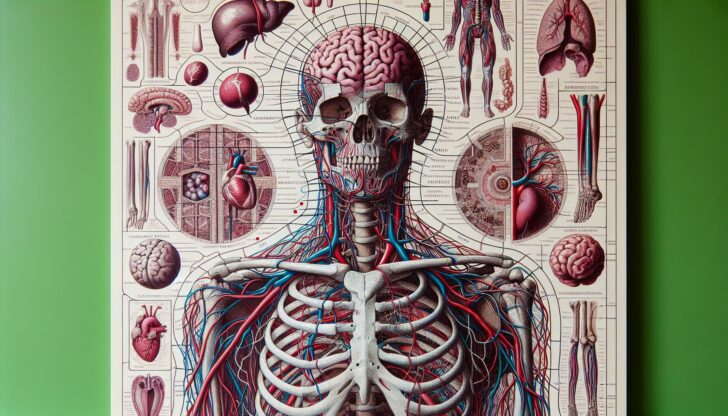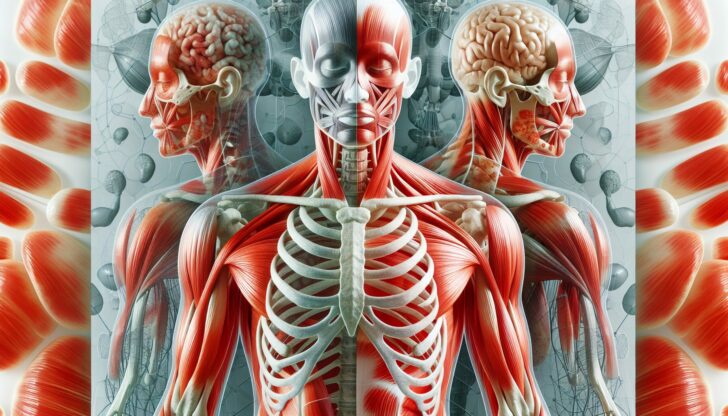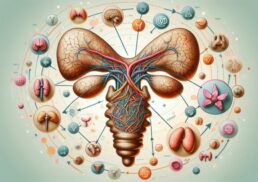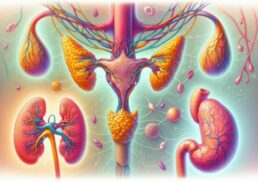Anatomical definition refers to the study of the structure of organisms and their body parts. This involves understanding the physical composition and organization of different biological entities, from muscles and bones to nerves and blood vessels. This article will delve into the term’s precise meaning, its applications, and its historical context.
Table of Contents
Key Takeaways
The term ‘anatomical’ refers to the study of the structure of organisms and their body parts and is integral to the broader field of anatomy, which has a rich history dating back to ancient dissections in Alexandria.
Anatomical knowledge is essential in various fields, including medicine and medical coding, as it provides a precise language for describing body positions, structures, and conditions, enhancing communication and accuracy in healthcare.
The study of anatomy is divided into branches such as gross anatomy, microscopic anatomy, and comparative anatomy, each focusing on different aspects of organism structures, thereby offering a comprehensive understanding of the body’s complex systems.
Defining “Anatomical”

The term ‘anatomical’ refers to the branch of morphology that studies the structure of organisms and their body parts, also known as anatomical structure. It is derived from the broader field of anatomy, which involves dissecting and understanding the physical composition of living beings. Anatomic studies have a rich history, with the first known use of the term dating back to 1627.
Anatomical knowledge encompasses everything from the arrangement of bones and muscles to the intricate network of nerves and blood vessels in the brain. An anatomist, someone who specializes in anatomy, contributes significantly to our understanding of how organisms function. The detailed study of anatomical structures and features helps demystify the complex machinery of life.
Anatomical as an Adjective

The term ‘anatomical’ functions as an adjective, describing features related to the body’s structure. For instance, when examining fossil bones, anatomists use ‘anatomical’ to highlight the structural significance of these remnants in studying ancient life. This usage extends to technology, where ‘anatomical’ can metaphorically describe the structured layout of a system’s components.
In the realm of medicine, ‘anatomical’ refers to specific characteristics and factors. As an example, one can consider relaxed neck muscles or enlarged tonsils as anatomical factors potentially leading to conditions such as snoring. Anatomical drawings, often found in textbooks, simplify complex engineering into basic components for better understanding. This adjective thus plays a versatile role in various fields, from paleontology to modern medicine.
Medical Dictionary Insights
For those venturing into the field of anatomy, medical dictionaries prove to be invaluable tools. Resources like Merriam-Webster and Stedman’s Medical Dictionary provide pronunciation guides to help users correctly pronounce complex anatomical terms. These guides are particularly useful for students and healthcare professionals who need to communicate accurately and effectively.
Stedman’s Medical Dictionary, one of the most trusted resources in healthcare, offers essential information on anatomical terms. These dictionaries:
Fill in incidental details for new anatomical terms or conditions encountered during medical studies or practice
Provide clear definitions and detailed explanations
Enhance the learning experience and ensure precise communication in the medical field
Examples of Anatomical Usage
The use of anatomical terms is vital for the precise description of body positions and conditions. For example, the terms ‘prone’ and ‘supine’ are used to describe a body lying face down and face up, respectively. These terms are commonly used in medical settings to ensure precise communication about patient positioning during procedures.
Such specific terminology extends to various medical contexts, helping healthcare professionals describe and document conditions accurately. Whether it’s noting the exact location of an injury or detailing a surgical procedure, anatomical terms provide a universal language that enhances clarity and reduces misunderstandings.
Historical Development of Anatomical Knowledge
The journey of anatomical knowledge spans centuries, from ancient dissections in Alexandria to modern multidisciplinary analysis. Understanding this evolution offers a deeper appreciation of how far we have come and the figures who have shaped our current understanding of anatomy.
Ancient to Medieval Times
The origins of anatomical studies can be traced back to the early 3rd century B.C., when Greek physicians Herophilus and Erasistratus performed the first known human dissections in Alexandria. Accused of performing vivisections on living criminals, these pioneers laid the foundation for systematic dissection. Herophilus, in particular, made significant contributions by differentiating nerves from blood vessels and tendons, and refuting the belief that the pulse was not associated with the heartbeat.
The advancement persisted into the 13th century in Italy, where Bologna and Salerno became the hubs for conducting human dissections. Mondino de Luzzi, Alessandro Achillini, and Antonio Benivieni conducted systematic dissections, using techniques like vascular filling to preserve bodies, a method comparable to those used in the 19th century. These early anatomical studies often involved detailed illustrations, which were crucial for education and further research.
The medieval period, however, saw a decline in anatomical studies due to the scarcity of descriptive texts and preserved dissected remains. Despite this, the groundwork laid by early anatomists provided a foundation for future advancements.
Renaissance Advances
The work of Andreas Vesalius in the Renaissance period marked a substantial shift in the studies related to anatomy. Considered the founder of modern human anatomy, Vesalius published ‘On the Fabric of the Human Body’ in 1543, a detailed and accurate guide that corrected several errors made by Galen. His work on the human jaw bone and the flow of blood in the heart led to significant medical advances and new surgical techniques.
The detailed anatomical drawings in Vesalius’ book allowed for a more comprehensive understanding of the human body. His contributions not only advanced medical knowledge but also set new standards for anatomical studies, influencing generations of anatomists and surgeons.
Modern Anatomical Studies
Today, advanced techniques have been integrated into anatomical studies, providing deeper insights into the human body. Radiological examination and genetic analysis are key methods used to study ancient tissues and conduct detailed, non-invasive investigations. These multidisciplinary approaches allow for a better understanding of anatomical structures and their functions.
The integration of these advanced techniques has revolutionized the field of anatomy, enabling more precise diagnoses and effective treatments. Modern anatomical studies continue to build on the foundational knowledge laid by early anatomists, pushing the boundaries of what we know about the human body.
Check out Anatomy Education becomes “Alive”
Branches of Anatomy
Anatomy, a diverse field, is subdivided into numerous branches, each honing in on different aspects of organism structures. The primary branches include macroscopic (gross) anatomy, microscopic anatomy, and comparative anatomy. Each of these branches offers unique insights into the complex machinery of living beings.
Gross Anatomy
Gross anatomy focuses on the study of large body structures that are discernible to the naked eye, including:
Organs
Tissues
Bones
Muscles
This branch includes the examination of these structures without the need for a microscope.
Surgeons and anatomists often rely on gross anatomy to understand the physical layout of the body, which is crucial for performing surgical procedures and diagnosing medical conditions. It forms the basis of most anatomical studies and is essential for medical education and practice.
Microscopic Anatomy
Also referred to as histology, microscopic anatomy scrutinizes body structures at a microscopic scale. This involves studying tissues and cells that require magnification to be seen clearly. By understanding these smaller components, scientists and healthcare professionals can gain insights into the functional aspects of the body that are not visible to the naked eye.
Gross anatomy studies visible structures, while microscopic anatomy delves into the minute details, including histology and embryology. This branch is essential for understanding the cellular and tissue-level complexities of living organisms.
Comparative Anatomy
Comparative anatomy conducts analyses of the similarities and differences in anatomical structures across a range of animal species. This branch is used in research to classify species based on their skeletal traits and to understand evolutionary relationships and functional adaptations.
By comparing the anatomical features of different species, scientists can trace the evolutionary history and uncover the functional significance of various structures. Comparative anatomy thus provides a broader perspective on how organisms have evolved and adapted over time.
Importance of Anatomical Knowledge
For medical coders, healthcare professionals, and others involved in the medical field, anatomical knowledge is of paramount importance. Accurate understanding of anatomical structures and features allows medical coders to correctly assign codes for procedures and diagnoses, enhancing communication with healthcare professionals and reducing the risk of coding errors.
Anatomical knowledge, including the understanding of the nervous system, helps medical coders read and interpret medical reports accurately, ensuring correct billing and efficient healthcare delivery. Understanding the relating between organs and systems is vital for accurate medical coding, making anatomical knowledge highly valued by employers.
Commonly Used Anatomical Terms
For accurate descriptions of positions and directions in the human body, the use of anatomical terms is indispensable. Terms like anterior (ventral) and posterior (dorsal) indicate the front and back of the body, respectively. Medial and lateral describe movements toward and away from the body’s midline.
Other terms such as proximal and distal refer to positions nearer or farther from the trunk or point of origin. Superior (cranial) and inferior (caudal) describe positions toward the head and away from it. These related words provide a standard language for accurately describing anatomical locations and directions, crucial for medical practice and education.
Summary
The journey through anatomical knowledge reveals its profound impact on our understanding of the human body and medical practice. From the historical dissections in Alexandria to modern genetic analysis, each advancement has built upon the past, leading to the sophisticated field of anatomy we know today.
Understanding anatomical terms, their usage, and their historical development is crucial for anyone interested in the medical field. This knowledge not only enhances communication but also ensures precision and accuracy in medical practice. As we continue to explore and understand the human body, the significance of anatomical knowledge remains ever-present.
Frequently Asked Questions
What does ‘anatomical’ mean?
‘Anatomical’ refers to the study of the structure of organisms and their body parts. It is a term dating back to 1627.
How is ‘anatomical’ used as an adjective?
‘Anatomical’ is used as an adjective to describe features related to the structure of the body in various contexts, such as fossils, technology, and medical conditions.
What role do medical dictionaries play in anatomical studies?
Medical dictionaries such as Merriam-Webster and Stedman’s offer crucial anatomical terms and pronunciation guidance for students and healthcare practitioners, aiding in anatomical studies.
Can you give examples of anatomical terms used in practice?
Anatomical terms used in practice include “prone,” “supine,” “anterior,” and “posterior,” which describe body positions and front-and-back orientation.
Why is anatomical knowledge important?
Anatomical knowledge is important because it allows medical coders to accurately assign codes for procedures and diagnoses, which enhances communication with healthcare professionals and reduces the risk of coding errors.









